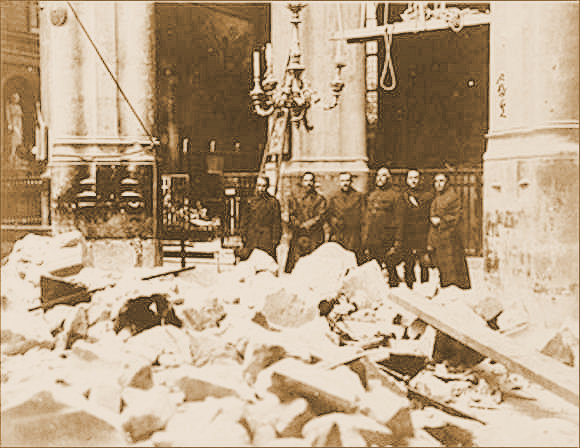 |
| Floyd Gibbons, Best Known American Correspondent of the War |
Soldiers and sailors fight wars. Journalists tell their stories. American Journalists in the Great War: Rewriting the Rules of Reporting is the storytellers’ story. It is a collection of tales of personalities over a variety of theaters. Their national status morphed from neutrals to belligerents.
Like the U. S. Army, American journalists gained experience during the Punitive Expedition into Mexico in search of Pancho Villa. With the withdrawal of the expedition, reporters followed the rising crescendo of guns emanating from Europe. As neutral citizens, American journalists were welcomed, tolerated, or expelled by Allies and Central Powers. American reports chronicled atrocities in Belgium. With the cutting of Germany’s cable, American journalists became the only avenue through which to get the war's story out, most importantly to neutral America. With America’s entry into the war, civilian garb was traded for the journalists’ uniforms of the American Expeditionary Force. Some would eventually report on the Russian Revolution and the Versailles Conference.
A few of the names may be recognizable: Richard Harding Davis, who exposed German brutality; Lowell Thomas, who told the saga of T. E. Lawrence of Arabia; Heywood Broun, who ran afoul of AEF authorities. Some would make news, such as John Reed, who became a spokesman for the Bolsheviks, availed himself of their protection, and is buried in the Kremlin.
American journalists publicized some of the best-known Great War stories and changed the narrative of reporting. Madeline Doty assured that Germans were not “barbarians” but “just like ourselves, just folks, kindly and generous, deceived and browbeaten by a ruthless military group.” Suffragist Rheta Dorr drew inspiration from Maria Bochkareva and her Women’s Brigade, who offered to fight for Russia and spread their legend far and wide. Floyd Gibbons, who lost an eye at Belleau Wood, immortalized “Come on, you sons-of-bitches! Do you want to live forever?”
Reporting practices created heroes and left others in obscurity. News restrictions on frontline soldiers forced the spotlight on aviators, bestowing heroic status on the Lafayette Escadrille. Sleepless nights of Damon Runyon of the New York American and Thomas Johnson of the New York Sun immortalized the “Lost Battalion.” Sgt. Alvin York performed service above and beyond the call of duty, but Saturday Evening Post writer George Pattullo transformed York into an icon. Even the most famous American phrase of the war was a journalistic concoction, a blend of Gen. Pershing’s salute and staffer Col. Charles Stanton’s “Lafayette We Are Here,” which reporters eagerly attributed to Pershing.
War accounts reflected reporters’ divergent world views. The April 1915 issue of Metropolitan magazine included John Reed’s "In the German Trenches" and excerpts from Richard Harding Davis’s "With the Allies." Whereas Davis used his brilliant descriptive powers to portray the German war machine as an evil threatening civilization, an evil against which America must prepare itself, Reed also described horrors and absurdities of war that dehumanized the working-class men who fought across the trenches.
Author Chris Dubbs has crafted an easy-to-read examination of the men and women who brought the Great War to America’s newspapers and homes. He provides a birds-eye view of his subject spiced by personal anecdotes. The many photos put faces to names, the index makes for easy reference, and the bibliography is a guide to further reading. I find this work to be an informative break from detailed accounts of individual battles. American Journalists in the Great War is an excellent choice for Roads readers seeking a different perspective on the war.
Jim Gallen








































